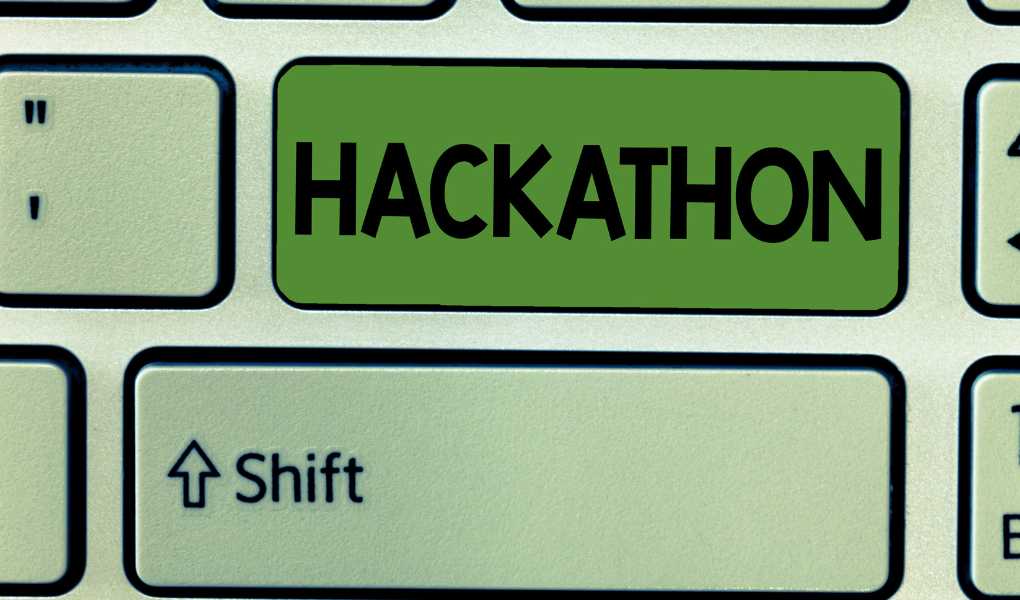As physical and digital interconnection grows, computing speed increases, and society’s concerns become more complicated, short, focused brainstorming sessions that attract top technical and non-technical talent and produce practical prototypes have become the new norm. To put it simply, this is the hackathon’s power.
In this blog post, we’ll look at what a hackathon is, why they’re so popular, and how to host one successfully.
Table of Contents
What Is A Hackathon?
Today, we identify hackathons with software developers and hungry entrepreneurs, yet hackathons are used by companies all across the world to address problems. Look around, and you’ll see competitions in music, fashion, dance, architecture, and other disciplines to complete a project in a limited period of time.
Hackathon configurations differ depending on your industry and goals. For example, the Prada Group and German online retailer Zalando organize hackathon-style events to address sustainability issues. The Vatican (yep, the Vatican) organizes events to identify technical answers to complicated problems including social inclusion, interfaith dialogue, and offering resources to migrants and refugees.
While the aim of each competition varies, the format is generally the same: a physical or digital event in which participants are pushed to create some form of innovation, such as a working software or hardware prototype.
What Makes Hackathons So Appealing?
So, what do these events have in common? What made them so popular? The answer appears to lie in the so-called “hackathon culture” that they encourage.
Hacker culture was founded in the 1960s by the early hackers, who were members of MIT’s Tech Model Railroad Club. This group pushed the idea of programming as a craft rather than a pastime or career. The initiatives had a strong sense of community, which meant that participants believed that working together was the best way forward.
According to independent tech media site Hackernoon, the hackathon is “so prolific and successful because it has become an autotelic, liberal, and great production measure for people interested in building technological projects, commonly using coding practices to do so.” Of course, hackathons are being used to construct a wide range of non-technological initiatives and solutions.
In other words, hackathons encourage creative effort, which can sometimes be its own reward. They are free of the traditional limits of creating something new (no need to stick to a set plan, you can collaborate with anybody you want – the sky is the limit). This freeing experience fosters a sense of solidarity among like-minded devotees.
A hackathon is a weekend-long event where anyone interested in technology may study, build, and share their ideas in a relaxed and accepting environment.
While hackathons were originally designed as internal events, most companies today invite anybody who wants to contribute, including outsider participants. Experts from varied backgrounds can help address a variety of subjects, not simply technical ones.
Some critics argue that corporate-sponsored hackathons contradict the original aim and identity of such events. They claim that awards and flashiness may “constrain” the creative process and attract the wrong types of participants. However, prioritizing the requirements of the participants (“the hackers”) over those of the organizers yields a straightforward answer.
How To Organize A Hackathon?
Running a successful hackathon requires a robust and well-formulated challenge, an interested audience, and the proper infrastructure.
Whether digital or physical, every hackathon follows a similar process: preparation, team formation, innovative issue solving, and, finally, presentations and rewards. We’ll break out the steps below. Before the Hackathon:
Select A Slogan And Specify The Challenge(s)
All hackathons are theme-based, therefore selecting a subject that will appeal to the appropriate audience is critical.
Internal preparations, such as briefings with teams that want to contribute to challenges, should begin as soon as possible. It is also necessary to thoroughly brief all organizers and relevant stakeholders, as well as to check for any substantial limits that may have an impact on the hackathons, such as working laws or event overlaps.
The challenge (the more precise need or set of requirements related with the slogan) can be declared either before or during the hackathon. Participants should properly comprehend the question. If they are needed to fill up a canvas or use a specific template, they must have the opportunity to ask clarifying questions before the actual job begins.
Decide On The Right Infrastructure
A hackathon can take place either in person or online. Each has perks and cons. A real setting allows participants to engage more quickly on a personal level, use materials like Post-Its, and get tangible benefits at the end, such as awards or gifts.
Digital places allow you to invite anyone from anywhere in the world. This comprises not only the competitors, but also the experts, mentors, and jury members. As a result, there is far more diversity, which leads to more creative production and easily with the help of hackathon management softwares. A digital arena, such as a platform where teams can form and creativity can thrive, will allow you to cooperate and co-create even during a pandemic.
Define Your Process
When developing your process, consider which phases your participants should go through. With each of these phases, you will associate significant deliverables on which participants will collaborate. The primary deliverable at the end of the hackathon will be a pitch. Many participants have never thrown before in their lives. What advice can you provide them? What should they be looking out for or mentioning? How much time will they have? Answering all of these questions will ensure that you receive high-quality results.
When creating the process, a critical decision will be whether all ideas pass through all steps, resulting in one or more winners, or whether to incorporate evaluations/gates in between to filter ideas out.
Define Your Audience
When determining your audience, consider your topic and challenges. Then evaluate who could solve them and what skills these participants would require. You can make your hackathon more or less restricted; can anyone participate, or do they have to meet certain criteria? Don’t be hesitant to look beyond your organization.
User management is also necessary. Physical hackathons will need organizations to employ online event tools. This manner, the event becomes official, and registration confirmation is almost immediate. To submit a solution to an online hackathon platform, utilize the same software that was used to register.
Judging Ideas
Make sure to share the judging criteria with the jury. Without this, the jury will be unable to agree on the winners. If participants are aware of a varied but renowned jury, they will be more likely to participate. With an online hackathon, you can have jury members review individually or as a team. Individual judging results in less group bias. A mechanism would then automatically rate the concepts based on the jury’s feedback.
While hackathons have some drawbacks (for example, participants may perceive a decreasing return on long hours spent developing ideas), their impact is significant and long-lasting. Hackathons are a fantastic tool for innovation because of the sharing culture they encourage, the diversity of talent they attract, their gamified, fun character, and their versatility (they can be run online or offline, within or between enterprises, etc.). Mercer | Mettl helps you host the best hackathons, according to your needs.
Also Read: Areas Of Responsibility Of The Customer And The Cloud Provider



